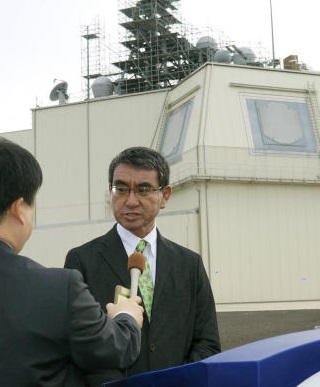
- ARAB NEWS
- 27 Apr 2024

TOKYO: The Japanese government will suspend plans to deploy the Aegis Ashore land-based missile defense system in Akita and Yamaguchi prefectures, Defense Minister Taro Kono said Monday.
The decision follows a technical problem found in the interceptor missile's booster rocket, which would take a lot of time and money to resolve, Kono told reporters in Tokyo.
The suspension means an effective withdrawal of the Aegis Ashore deployment plan, which is a serious blow to Japan's missile defenses and could undermine its relations with the United States, which supplies the system.
Kono said that he briefed Prime Minister Shinzo Abe about the suspension and received his approval on Friday.
The National Security Council will be convened soon to discuss a response. It is rare that a major policy decision has been announced by a defense minister before an NSC meeting.
The government adopted the Aegis Ashore deployment plan in December 2017 to counter the threat from North Korean ballistic missiles. “Aegis ships will substitute for the land-based system for the time being,” Kono said.
The Defense Ministry had told local officials in Yamaguchi that it would ensure that a booster rocket would drop back to earth within the Ground Self-Defense Force Mutsumi training area, the candidate site for the deployment in the western prefecture.
But it was found through talks with the United States earlier this year that the hardware as well as the software would need to be modified in order to control where the booster rocket would fall.
Since it would take 10 more years and hundreds of billions of yen in additional costs for the development of the interceptor missile, Kono judged that the current plan was "not reasonable."
On Monday, Kono informed the governors of the two prefectures over the phone about the suspension of the Aegis Ashore deployment plan.
Kono admitted that the government had been too optimistic about the deployment plan so far and said that he wants to visit the prefectures soon to offer an apology.
The deployment plan faced growing opposition in Akita, northeastern Japan, following revelations of its sloppy handling of related issues, including the use of incorrect survey data in the process for selecting a candidate site.
JIJI Press